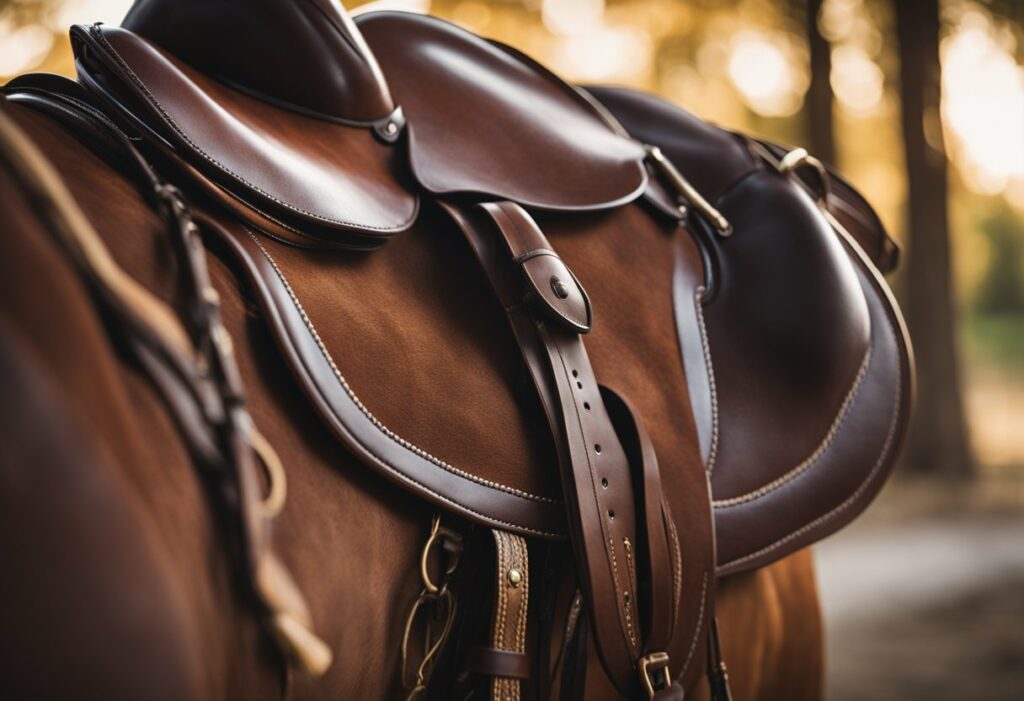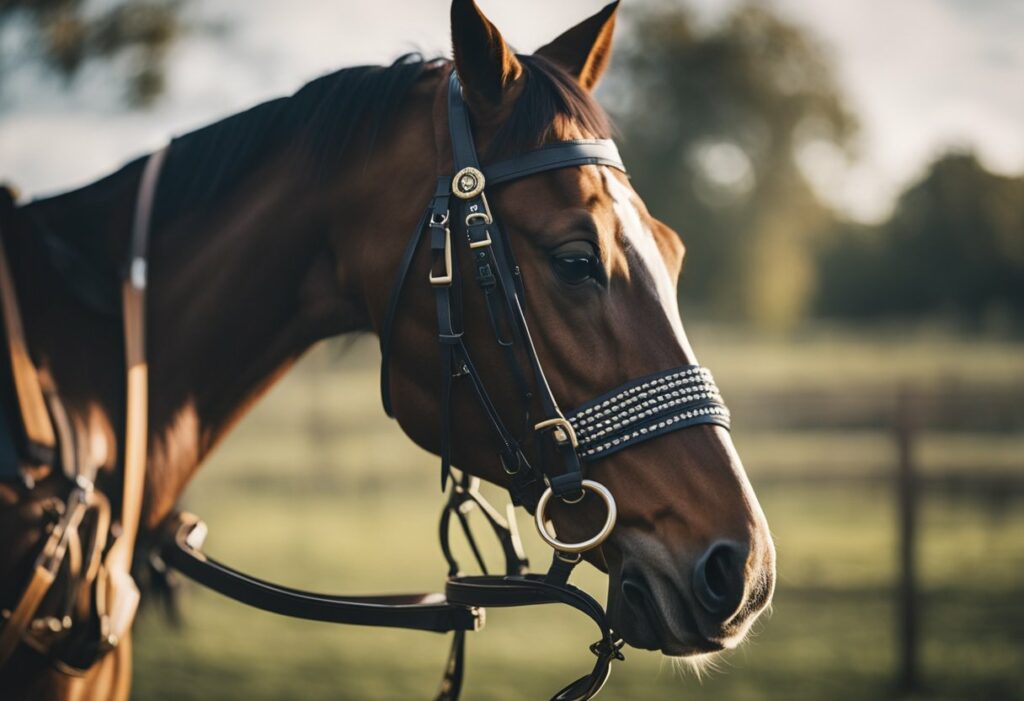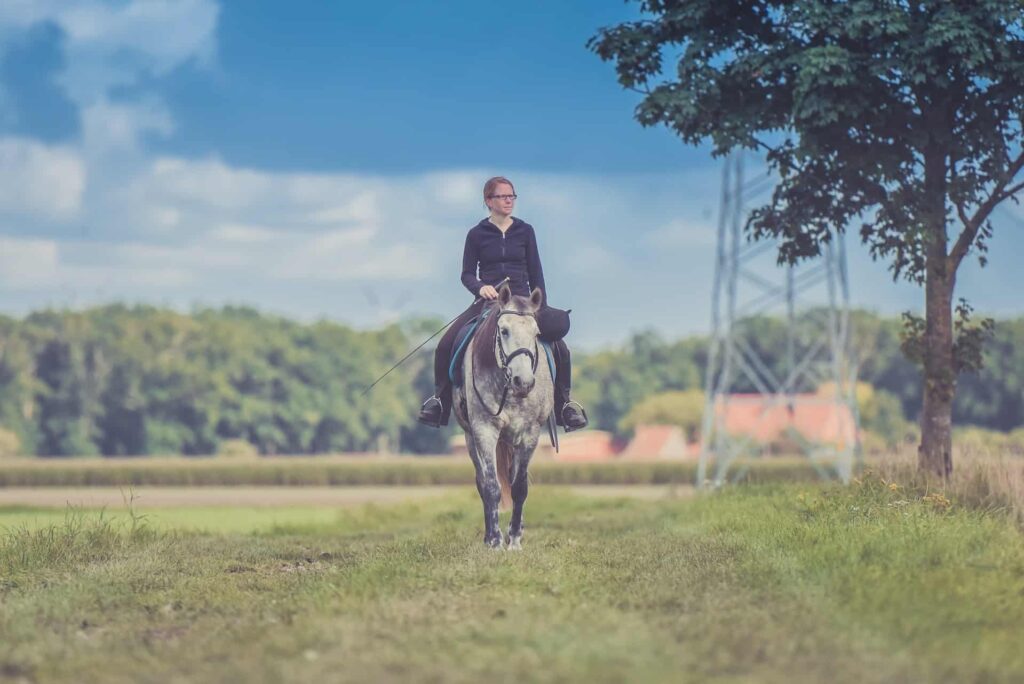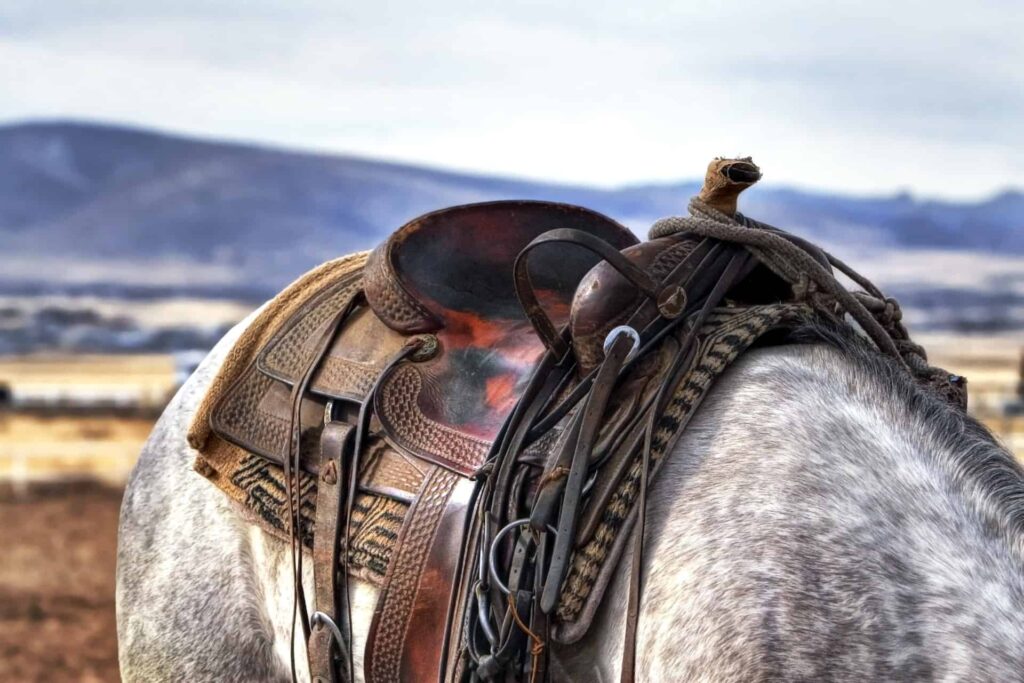The age-old question of “do horses like to be ridden” is complicated by the fact that horses possess distinct personalities and preferences. Historically, horses have played a vital role in human civilization as work animals, in warfare, and for transportation. In recent times, horses have been increasingly kept for pleasure and sport, raising the question of whether they actually enjoy being ridden.
Understanding horse behavior is crucial when trying to determine if they like to be ridden. While some horses seem to enjoy the experience and bond they share with their riders, others may show signs of discomfort, stress, or resistance. It is important to recognize these signs and prioritize the horse’s well-being, which can be influenced by factors such as health, breed, and the quality of the tack and equipment used.
Key Takeaways
- Individual personality and preferences influence a horse’s response to being ridden.
- Recognizing signs of discomfort or stress is important to ensure a horse’s well-being.
- Factors such as health, breed, and tack quality can impact a horse’s experience of being ridden.
Understanding Horse Behavior
Signs of Discomfort and Pain
When assessing if horses like being ridden, it is crucial to recognize any signs of discomfort and pain. A tool for identifying pain in ridden horses is the Ridden Horse Pain Ethogram, which lists specific behaviors indicative of pain. These behaviors can include pinned ears, bolting, rearing, and tail swishing. Observing a horse’s behavior while being ridden can help determine if the horse is experiencing discomfort or pain.
Body Language and Communication
A horse’s body language can provide valuable insights into its feelings about being ridden. Communication through body language involves various aspects, such as ear position, nostril flare, tail movement, and overall posture. Pinned ears, for instance, may indicate fear or anxiety, while nostril flaring can signal stress or discomfort.
Horses also communicate through vocalizations, such as sighing, snorting, or neighing. Sighing can express contentment, while snorting might imply curiosity or alertness. Observing these body language cues while riding can help assess the horse’s mood and overall happiness, contributing to its well-being during the riding process.
Temperament and Personality
Each horse has a unique temperament and personality, which can affect its response to being ridden. Some horses may enjoy being ridden, while others might find it stressful or discomforting. Gaining an understanding of individual horse temperaments can help riders provide a more positive experience for the horse.
Factors that may influence a horse’s temperament include breed, age, training, and past experiences. Being attentive to a horse’s personality and its reactions while being ridden can help to ensure that riders are addressing any issues that might arise and provide a more enjoyable experience for both horse and rider.
The Riding Process
Training and Commands
The riding process begins with proper training for both the horse and the rider. Domesticated horses are often trained for various activities, from work-related tasks to sports and leisure. The training process aims to establish clear communication between the horse and the rider, creating a strong bond and partnership based on trust.
Horses are introduced to the saddle and bit during training, allowing them to become comfortable with the equipment. Trainers use discipline-specific commands to teach the horse how to respond to the rider’s signals. These commands control the horse’s movements safely and efficiently during riding activities, such as trail rides, sports events, or jobs that require a working horse.
Riding and Handlers
When it comes to riding, the handler plays a crucial role in ensuring the horse’s well-being. A knowledgeable and experienced rider can communicate with the horse effectively, enhancing the overall experience for both horse and rider. Horse riders must develop a deep understanding of their horses to effectively guide them in various riding scenarios.
During the ride, proper communication between the horse and rider is crucial. Handlers must give clear and consistent commands to their horses, maintaining a strong partnership and trust. This confidence in each other enables the horse to respond appropriately to the rider’s cues, contributing to a seamless and enjoyable ride.
Post-Ride care and Relaxation
Once the riding activity is over, post-ride care is important for maintaining the horse’s health and well-being. Horses need proper relaxation and cooling down after rigorous activities, which can include walking them around to prevent stiffness.
Post-ride care also entails grooming and checking for any signs of discomfort or injury. Ensuring that the horse is well-cared for after a ride not only promotes their overall well-being but also reinforces the bond between the horse and rider. This mutual care and understanding create a harmonious and rewarding riding experience for both parties.

Horse Tack and Equipment
Understanding the Saddle
The saddle plays a significant role in the comfort of both the horse and the rider. A well-fitted saddle can distribute the rider’s weight evenly across the horse’s back, thereby reducing pressure points and potential discomfort. It is crucial to ensure proper saddle fit, as an ill-fitting saddle can cause pressure points, leading to pain and reduced performance in the horse. A saddle should be carefully chosen based on the horse’s back shape, wither height, and girth size. For new riders, it’s important to learn how to saddle a horse properly.
Chiropractors specializing in equine care can be particularly beneficial in identifying any discomfort or imbalances caused by poor saddle fit. They can recommend adjustments, padding, or a different saddle to accommodate the horse’s needs. In addition to the saddle fit, regular maintenance and proper care, such as cleaning the saddle and checking for wear, can also contribute to the overall comfort and happiness of the horse while being ridden.
Bits and Other Tack
Bits are an important part of horse riding equipment, as they enable the rider to communicate with the horse through the reins. However, not all bits are suitable for all horses, and an inappropriate or ill-fitted bit can cause discomfort or pain. It is crucial to choose a bit that suits the horse’s mouth shape and size, as well as the rider’s skill level and riding style. Regular dental check-ups and adjustments can help ensure the bit does not cause any harm to the horse.
Other tack items, such as bridles, girths, and stirrups, should also be carefully selected to provide optimum comfort for the horse. For instance, the use of an appropriately sized girth can prevent issues like girth galls or discomfort from too much pressure on the horse’s sternum. Additionally, ergonomic stirrups can help a rider maintain a more balanced seat, which can directly affect the horse’s comfort levels during riding.
Understanding the importance of correctly fitted and comfortable tack and equipment ensures a positive riding experience. Providing the horse with a comfortable saddle and bit, as well as other well-fitted equipment, can greatly impact their happiness and willingness to be ridden. Regular check-ups, adjustments, and maintenance of tack can ensure a pleasant and enjoyable experience for both the horse and rider.
Health and Wellbeing
Identifying Pain or Discomfort
Riders and owners need to recognize signs of pain or discomfort in horses while riding. Overuse and repetitive stress can lead to physical health issues, compromising their well-being. Some common signs of discomfort include bucking, resisting the rider’s aids, and stiffness. To ensure horse health, it is crucial to regularly evaluate their physical condition. Consulting with professionals, like a chiropractor or equine therapist, can help identify and address these issues.
Managing Anxiety and Fear
Horses can experience anxiety and fear in different circumstances. Wild horses that are not used to being ridden may be prone to anxiety during the process. It is important to approach these situations with patience and understanding. Coercion and punishment can exacerbate fear, leading to long-term negative effects on the horse’s mental and emotional well-being. Clear communication with the horse and the use of positive reinforcement techniques can significantly reduce anxiety and fear.
Promoting Contentment and Enjoyment
Understanding a horse’s preferences and needs promotes the horse’s contentment and enjoyment while being ridden. Establishing a strong bond of trust and love between the rider and the horse is crucial. This connection can be achieved through consistent communication and acknowledging the horse’s likes and dislikes. Working with the horse’s natural tendencies, as well as providing appropriate training aids, can help ensure a positive riding experience for both the horse and the rider.
Breed and Domestication
Differences Among Breeds
There are various breeds of horses, each exhibiting unique characteristics and traits. Wild horses, such as the Przewalski’s horse, possess distinct features that distinguish them from domesticated breeds. These wild ancestors were likely initially captured and tamed to become the ridden and harnessed horses we see today. As domesticated horses spread out from their origins, many different types and breeds emerged, each adapting to specific geographical locations, uses, and human preferences.
Domesticated horse breeds can vary significantly in terms of size, speed, temperament, and purpose, making them suitable for different tasks, ranging from racing and riding to agriculture and warfare. For example, the conquistadores rode a particular breed of horse during their invasions of the Americas, which demonstrated the complexity of horse breeding throughout history and its impact on society (source).
Impact of Domestication
The process of domestication has significantly altered the behavior, physiology, and appearance of horses. Domestication allowed for better control and adaptation of horse breeds to fulfill various human needs, such as transportation, work, and leisure activities. The bond between humans and horses has developed over time, leading to improved communication and understanding between the two species.
Horses are known to be trainable and adaptable creatures, which could indicate that they can tolerate being ridden. It is important to note, though, that each individual horse may have its preferences, some might enjoy being ridden, while others could resist or be uncomfortable with the experience. By understanding the history of horse domestication and breed differences, we can better comprehend and appreciate the complexities that have led to the vast array of horse breeds found today.
The domestication of horses has undeniably influenced their behavior, and while it might not explicitly answer if they “like” being ridden, it does provide valuable insights into their varying breed characteristics and their ability to form bonds with humans.

Related: Horse Basics
Frequently Asked Questions
Does riding horses hurt their backs?
Horses are built to carry weight on their backs, and when ridden correctly with a well-fitted saddle and an attentive rider, it generally does not cause them pain. However, if the horse is injured, excessively tired, or improperly ridden, it could lead to discomfort and potential back problems over time. Remember, a well-cared-for horse and proper riding techniques aid in preventing any harm.
Do horses feel pain when ridden?
Horses, like humans, can experience pain and discomfort. When ridden with proper care, horses should not experience significant pain. However, if a rider is too heavy, the saddle does not fit correctly, or the horse is pushed beyond its physical limits, there is a chance that the horse may feel pain. It is vital for riders to pay attention to their horse’s body language and be responsive to any signs of discomfort.
Is it cruel to ride horses?
Riding horses, when done responsibly and ethically, is not inherently cruel. Horses have been domesticated for thousands of years, and many enjoy and form strong bonds with their human riders. However, neglect, poor training techniques, and overworking a horse can lead to physical and emotional stress. To ensure the well-being of your horse, take the time to understand its needs and limits.
Do horses get tired of being ridden?
Horses, like any other animal, can become physically tired after a certain amount of exercise. It is essential to maintain a balanced exercise routine for your horse to prevent excessive fatigue. The specific exercise duration and intensity depend on the individual horse’s age, fitness level, and overall health. Giving your horse adequate rest days and varying the activities can help prevent boredom and fatigue.
Do horses like to be hugged?
Horses have individual personalities and preferences, and some might appreciate physical touch more than others. While some may enjoy being hugged and cuddled, others might prefer a pat or a gentle stroke. It is crucial to observe your horse’s reactions to understand their preferences and respect their boundaries.
Do horses love their rider?
Horses can form deep emotional bonds with their human companions, including their riders. This bond develops through trust, mutual respect, and time spent together. A strong connection between a horse and its rider can lead to a more enjoyable and successful riding experience.
Last Updated on October 14, 2023 by Nate Dewsbury



